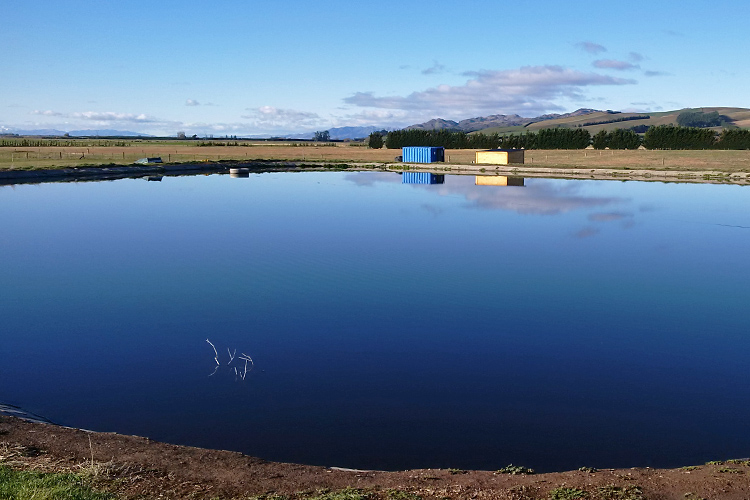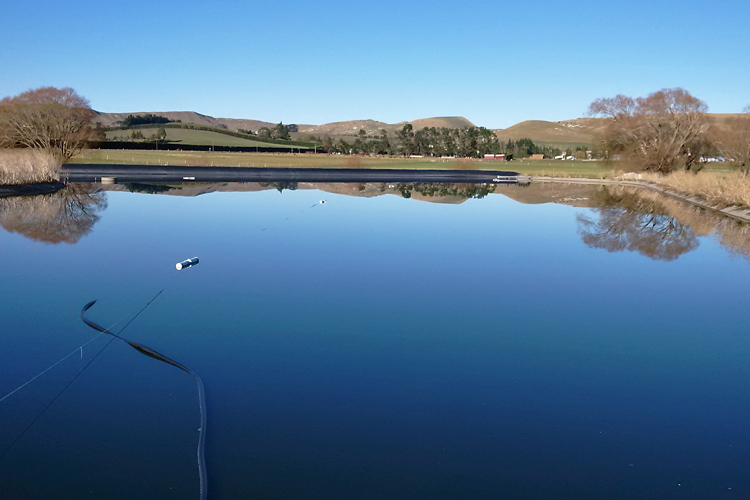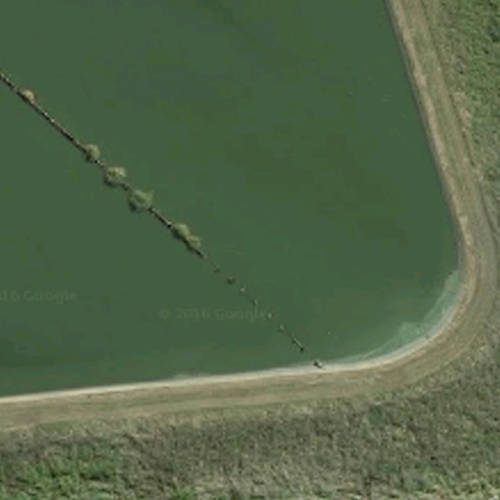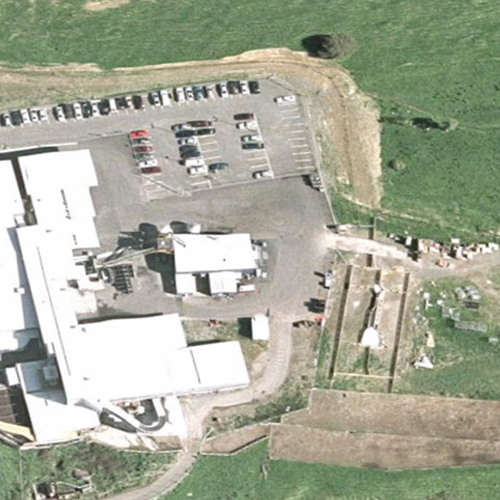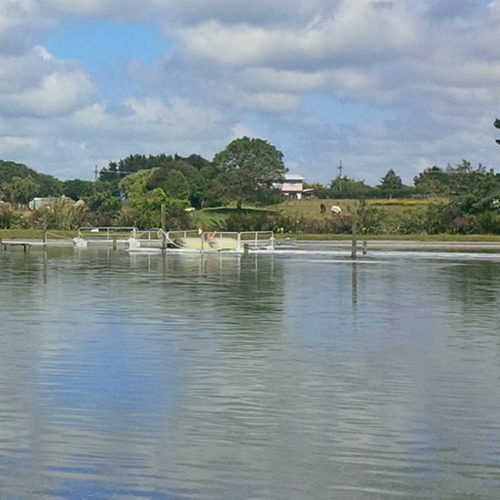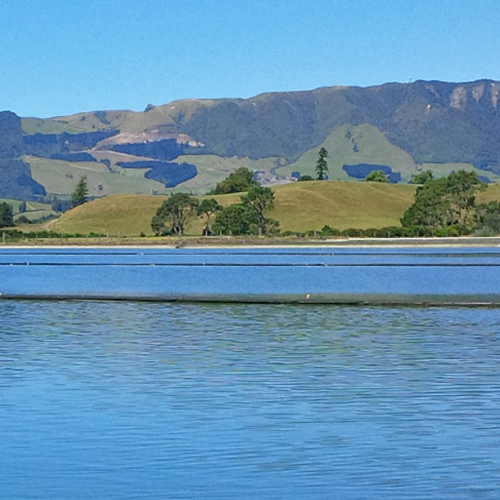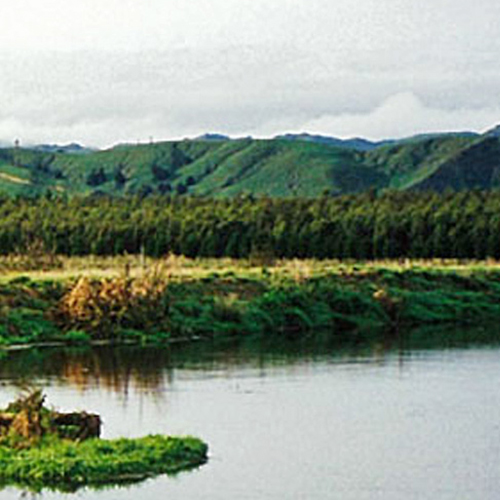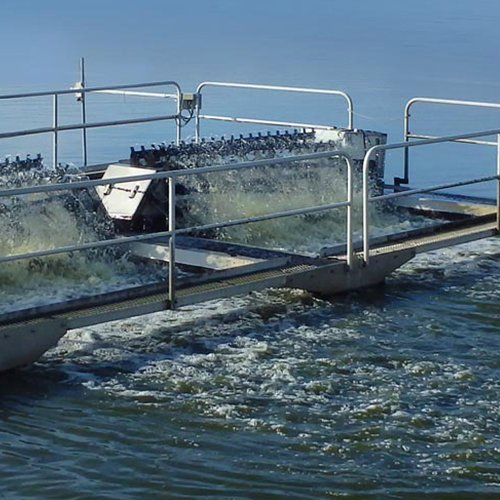Case Studies
Waikari Ponds
Background
There are two ponds at the Waikari site, a primary and a secondary pond. The Primary pond has a surface area of 4,230m² and averages 900mm deep. The Secondary pond has a surface area of 2,760m² and also averages 900mm deep.
Before treatment, the primary pond had accumulated sludge to over 54% of the total pond volume and the secondary pond just under 50%. Sludge accumulations to this extent mean reduced treatment capacity and retention time and needed to be reduced. Mechanical desludging was not economically viable in this situation so Parklink were engaged to start Advanced Microbial Digestion (AMD) treatment.
The Waikari ponds have so far (June 2016) received a total of 5 months treatment from Parklink’s high-rate Bio-Reactor dosing system and 13 months of slow release treatment using Parklink’s Sludge Bombs.
Treatment
Bio-Reactor Treatment:
Bacterially produced compounds are manufactured on site introducing huge numbers of the range of needed species in a controlled manner to the ponds weekly.
Sludge Bomb Treatment:
Sludge Bombs continuously emit powerful nutrient and sediment digesting bacteria for approximately one month. The Sludge Bombs are replenished each month for the duration of the treatment season.
The AMD treatment was halted during winter due to low the water temperatures which dampened microbial activity. A treatment season is defined by the warmer months of the year when water temperatures are above 8-10 Degrees Celsius (typically October through May).
The Results
Waikari Primary (Large) Pond:
- Approximate wet sludge volume: 1,121m³. The original survey report stated a sludge volume of 1,870m³. This equates to the removal of about 749m³ so far.
- Total Dry Solids calculated: 87m³ (down from 141m³). The dry solids mass is what would remain of the sludge with the total absence of water or moisture.
- Percentage of total pond volume occupied by accumulated sludge: 40.04% (down from 54.44% showing a 14.4% reduction).
It is important to understand that the ‘Total Dry Solids’ percentage includes both organics and inorganics. As Parklink’s AMD (Advanced Microbial Digestion) treatment solubilizes and digests the organic particulate, the inorganics are unaffected (non-biodegradable) and obviously become concentrated through the loss of organic material. As the inorganic material becomes more concentrated, the TDS percentage actually increases as inorganics are heavier than organics.
- A selection of the sludge samples tested for inorganic content showed on average an inorganic content of 57%.
This pond has shown great results so far with a reduction of approximately 750m³ of sludge. This has resulted in an increased capacity and retention time. A continuation of the Sludge Bomb treatment should slowly reduce or at least maintain the accumulated sludge levels eliminating the need for any mechanical desludging.
Waikari Secondary (Small) Pond:
- Approximate wet sludge volume: 213m³. The original survey report stated a sludge volume of 1,152m³. This equates to the removal of about 939m³ so far.
- Total Dry Solids calculated: 7m³ (down from 96m³). The dry solids mass is what would remain of the sludge with the total absence of water or moisture.
- Percentage of total pond volume occupied by accumulated sludge: 12.8% (down from 49.4% showing a 36.6% reduction).
This pond has been completely desludged and is now in an excellent state and operating to maximum efficiency with only a thin layer of active biomass over the base. With the effect of the AMD treatment in the primary pond flowing through, this pond will not need desludging in the near future if at all and should continue to operate effectively.

